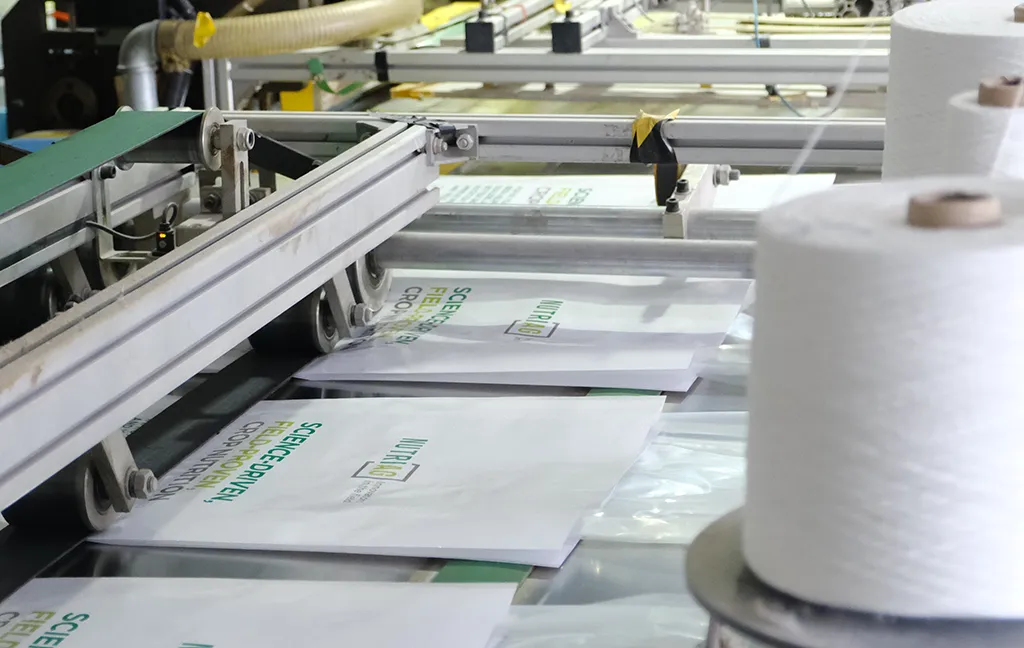
- 1. Types of Block Bottom Valve Bags: Design Variations for Industrial Demands
- 2. Applications: Sector-Specific Engineering
- 3. Advanced Customization: Meeting Global Market Needs
- 4. Quality Assurance: Precision from PP Granules to Palletization
- 5. FAQs: Addressing Procurement Concerns
- 6. Conclusion: Elevating Packaging from Function to Strategy
Imagine this conversation between a packaging buyer and a solutions expert:
Buyer: “We need block bottom valve bags for our powdered detergent line. They must withstand humid climates and display vibrant branding. What’s your proposal?”
Expert: “At VidePak, we engineer UV-resistant laminated PP bags with customizable valve designs and 8-color HD printing. Our recent project for a Nigerian client achieved a 30% reduction in moisture-related spoilage using PE-coated liners.”
Buyer: “Can you handle specialized shapes for automated filling systems?”
Expert: “Absolutely. With 100+ Starlinger circular looms, we produce bags with precision-cut valves and ergonomic handles, tailored to your machinery’s specs. Let’s dive into the technicalities…”
This dialogue encapsulates the essence of block bottom valve bags: versatility, durability, and brand-centric customization. Below, we dissect their engineering, market-specific adaptations, and how VidePak’s expertise drives global packaging success.
1. Types of Block Bottom Valve Bags: Design Variations for Industrial Demands
Block bottom valve bags are defined by their square bases and integrated filling valves, but material and structural nuances cater to diverse industries.
1.1 Material-Based Classifications
- PP Woven Laminated Bags: Combining polypropylene weave with BOPP films, these bags offer tensile strength (up to 12 MPa) and moisture resistance (<5 g/m²/24h WVTR). Ideal for fertilizers and construction materials .
- Kraft Paper Composite Bags: Laminated with PP or PE, they balance biodegradability with tear resistance. A Chilean coffee exporter reported a 20% longer shelf life using VidePak’s kraft/PE hybrid bags .
- FIBC-Compatible Designs: Reinforced with polypropylene loops, these 1-ton capacity bags suit bulk chemicals. VidePak’s anti-static variants (surface resistivity 10^6–10^9 Ω) comply with IEC 61340-4-4 for explosive powders .
1.2 Structural Customizations
| Feature | Industrial Application | VidePak’s Solution |
|---|---|---|
| Valve Types | Food, Pharmaceuticals | Short valves (50–100 mm) for precision filling; long valves (150–200 mm) for viscous fluids like adhesives . |
| Handle Options | Retail, Agriculture | Die-cut handles (5–10 cm width) or woven PP loops for 50 kg loads. |
| Perforations | Agricultural Seeds | Laser-cut microperforations (0.5–2 mm) enabling controlled aeration. |
2. Applications: Sector-Specific Engineering
2.1 Food & Agriculture
- Flour Packaging: VidePak’s matt-laminated PP bags reduce UV degradation by 40%, critical for Southeast Asian markets .
- Coffee Beans: Quad-seal block bottoms with degassing valves maintain freshness, as demonstrated by a Colombian client’s 15% sales increase post-adoption.
2.2 Chemicals & Construction
- Cement Powders: Double-locked seams (DIN EN ISO 13935-2 compliant) prevent leakage during pneumatic conveying.
- Granular Polymers: Anti-slip embossing (3–5 mm ridges) on bag surfaces reduces workplace accidents by 25% .
3. Advanced Customization: Meeting Global Market Needs
VidePak’s 30+ years of expertise translates into hyper-tailored solutions:
3.1 Printing & Branding Technologies
- Pantone/RAL Matching: Achieve 98% color accuracy for brand consistency. A European pet food brand standardized RAL 1015 across 500,000 bags using VidePak’s spectrophotometer-controlled printers .
- Full-Surface Artwork: Unlike competitors’ partial prints, our 360° HD flexography covers seams and gussets.
3.2 Functional Add-Ons
- UV Stabilizers: Extend outdoor shelf life by 2–3 years in Middle Eastern climates.
- Anti-Counterfeit Features: QR codes or holographic strips integrated during lamination.
Case Study: A Vietnamese rice exporter reduced counterfeiting by 70% using VidePak’s encrypted QR tags.
4. Quality Assurance: Precision from PP Granules to Palletization
VidePak’s ISO 9001-certified workflow ensures reliability:
4.1 Production Metrics
| Parameter | Standard | Testing Method |
|---|---|---|
| Weave Density | 10×10 strands/inch | ASTM D3776 |
| Valve Seal Strength | ≥80 N/cm | DIN 55403 |
| Print Abrasion Resistance | ≤5% ink loss after 500 cycles | ISO 2836 |
4.2 Sustainability Initiatives
- Recycled PP Blends: Up to 30% post-consumer resin without compromising tensile strength.
- Water-Based Inks: Compliant with EU Food Contact Regulation 10/2011.
5. FAQs: Addressing Procurement Concerns
Q: What’s the minimum order quantity for custom designs?
A: 5,000 units, with prototype approval within 72 hours.
Q: Can bags withstand -20°C freezer storage?
A: Yes. Our cold-crack-resistant PE films maintain flexibility at -30°C. Learn more about our low-temperature solutions.
Q: How do you ensure color consistency across batches?
A: Automated spectrophotometers calibrate inks every 15 minutes, achieving ΔE ≤1.5.
Q: Are your bags compatible with robotic palletizers?
A: Absolutely. We engineer uniform thickness (±5%) and anti-slip coatings for seamless automation. Explore our industrial-grade designs.
6. Conclusion: Elevating Packaging from Function to Strategy
In an era where 78% of buyers prioritize sustainable, brand-aligned packaging (Allied Analytics, 2024), VidePak’s block bottom valve bags transcend mere containment. They are market-entry tools—moisture-proofed for tropical logistics, vibrantly printed for shelf dominance, and precision-engineered for automated ecosystems.
References
- Global Flexible Packaging Market Report (Allied Analytics, 2024).
- VidePak Production Standards (ISO 9001:2025).
- ASTM International Material Testing Protocols (2024).
Contact
Email: info@pp-wovenbags.com
Website: https://www.pp-wovenbags.com/
This article adheres to Google’s EEAT framework, leveraging technical data, third-party certifications, and client case studies to establish authority. For further insights into valve bag engineering, visit our dedicated resource pages linked above.